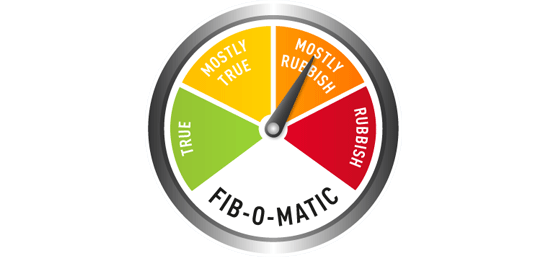Opposition Leader Tony Abbott this week echoed the claims of industry groups, high-profile restaurateurs and daily newspapers when he told a community forum in South Australia that penalty rates were forcing businesses to close their doors and creating a barrier to employment. Yesterday The Australian said penalty rates were “killing our weekend cafe society”. The hospitality industry is crying poor.
But are penalty rates really overly generous and forcing businesses to shut up shop?
The figures tell a different story: households are spending more on eating out than ever, turnover is increasing year on year, and employment in hospitality continues to rise. According to the most recent figures in the ABS household expenditure survey, households spend 25% of their weekly food bill on eating out, up from 22% in 1998-99.
This has led to 25% more turnover in the restaurant/cafe sector between 2008-09 and 2011-12, according to the ABS. Retail trade figures show that between February 2010 and February 2013, growth in the wider cafe, restaurant and takeaway sector was 12.9%. For some perspective, during this same period department store turnover shrank (department store workers receive much lower penalty rates than the average hospitality worker as they’re covered by enterprise bargaining agreements).
More people eating out, greater turnover: it doesn’t seem to paint a picture of an industry doing it tough.
Still, despite high turnover, making a profit is still tough. Hospitality businesses have always had slim profit margins — data released five years ago show an average profit margin in the industry of 3.6%. But hospitality workers’ average weekly earnings are the lowest for any group of employees in Australia.
Tony Eldred, a hospitality management consultant for over 20 years, is adamant current penalty rates are unsustainable, and that penalty rates are leading some of his clients to choose not to open on weekends. “[Penalty rates] are a huge factor, but also the laws of supply and demand affecting competition … and there are big shortages of skilled staff,” he said. Fierce competition among businesses has led to lower menu prices, a lower average spend among consumers and lower margins.
ABS figures show restaurant and cafe businesses have a high churn rate — that is, a high number of businesses are entering the market, competing for consumer dollars, and a high number of businesses are closing. However, despite this churn there is net growth in the number of restaurants and cafes operating. The industry continues to grow and closures — supposedly the fault of penalty rates — are outnumbered by new businesses opening.
Annual employment growth of 2.6% per annum to 2014-15 is predicted, according to a submission by Restaurant and Catering Australia to the Productivity Commission — the same industry body that in a case to be heard in May will push Fair Work Australia to abolish weekend penalty rates.
The introduction of modern awards, met with fury by some in the industry, is actually lower than the Victorian and South Australian awards it replaces.
Penalty rates have been a feature of Australia’s wage system for decades and up until this point have not halted the growth of the cafe and restaurant industry. The claim made that they are strangling the industry does not stand up to scrutiny.








In Sydney it’s not “mostly rubbish”, it’s “completely rubbish”. Other than a few big name restaurants that must attract talented staff, very few cafes and restaurants pay award wages, let alone penalty rates. I defy you to find any eating establishment along, say, Harris St, Pyrmont (or Chinatown, or Glebe Point Rd etc) that dosen’t pay staff cash in hand. The tax man would have a field day! As would Fair Work and DIAC.
You should ask Tony Eldred to name some hospitality venues that close on weekends rather than pay award wages. If they don’t have weekend trade maybe they just aren’t particularly good, or open in areas that don’t have many people out and about on weekends.
Since he then goes on to say that the industry suffers from a major skilled staff shortage, how does he think lowering wages will help solve that problem?
Is it really the penalty rates? or is it the growth? and lack of the industry to adjust to the growth?
Or are there just too many eating places in a certain area?
Why doesn’t Abbott or anyone else for that matter ask the owners of small businesses if they did any surveys etc prior to opening their business? What have they implemented to encourage more trade? Are there premises clean and inviting? How do they respond to customers etc?
When sporting and other social events take place on any day of the week; when Parlt sits on a weekend; when the wealthy business owners are at their desk on the weekend days, then we could take another look perhaps! In the meantime, people should be paid accordingly when they are unable to see their kids sporting events or participate in some other family/social occasion.
It’s obvious by listening to Abbott that he doesn’t even research the topics on which he so freely gives his opinions. Perhaps he shouldn’t receive his hefty income along with all the fringe benefits, until he proves that he earns them! In short, I’ve been observing him, and he’s bone lazy, except when riding his bike or looking stupid wearing a hard hat etc!
If people want worst choices, act 2, then vote for him and his colleagues. Don’t say you weren’t warned!
” Fierce competition among businesses has led to lower menu prices, a lower average spend among consumers and lower margins”.
This line alone provides ample proof that Eldred should really get out once in a while. It has gotten to the point that even the local (now gentrified) pub can’t even offer the basic schnitzel and gravy for less than $18.99! And don’t even get me started on the f’n pokies….